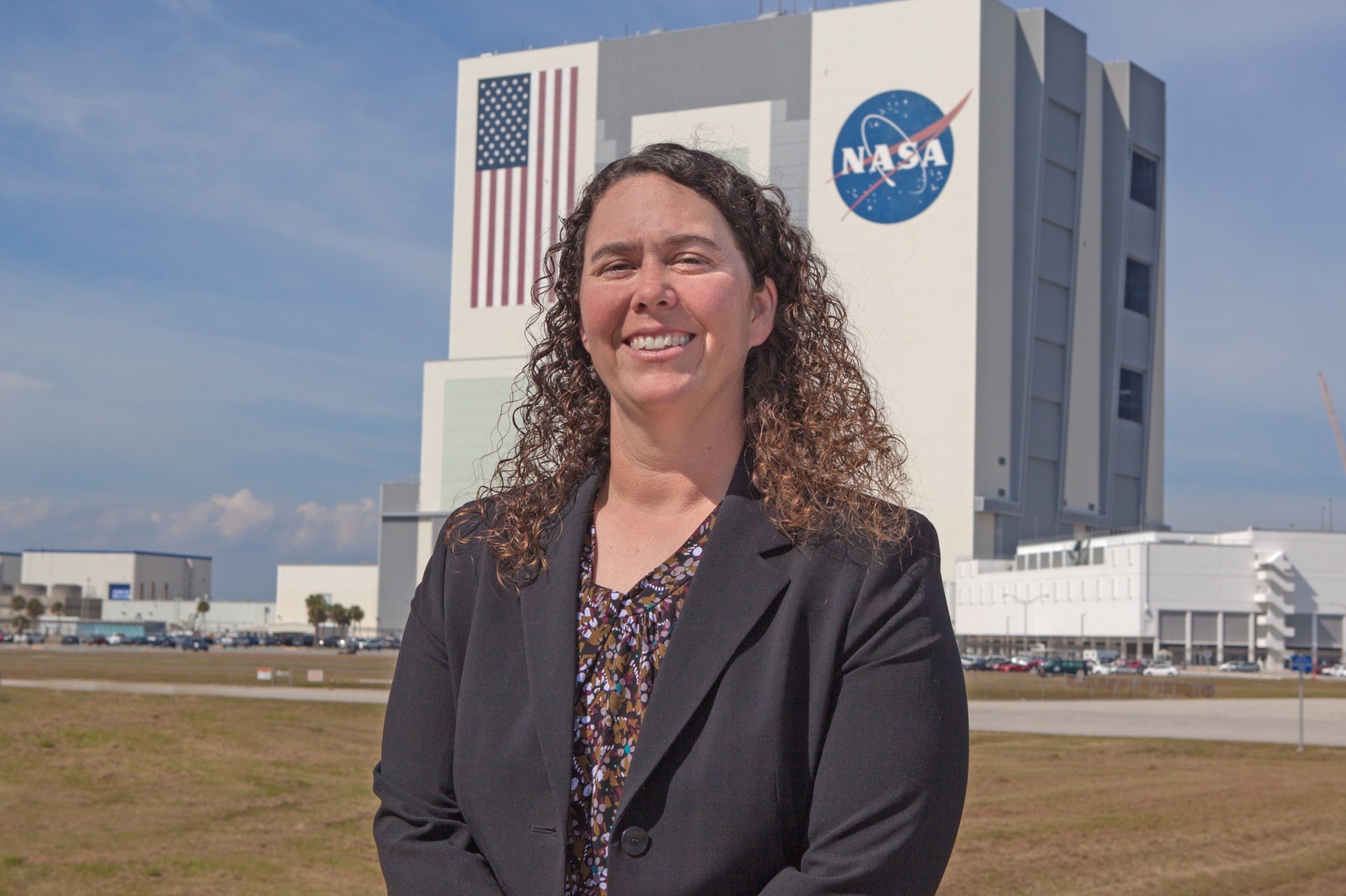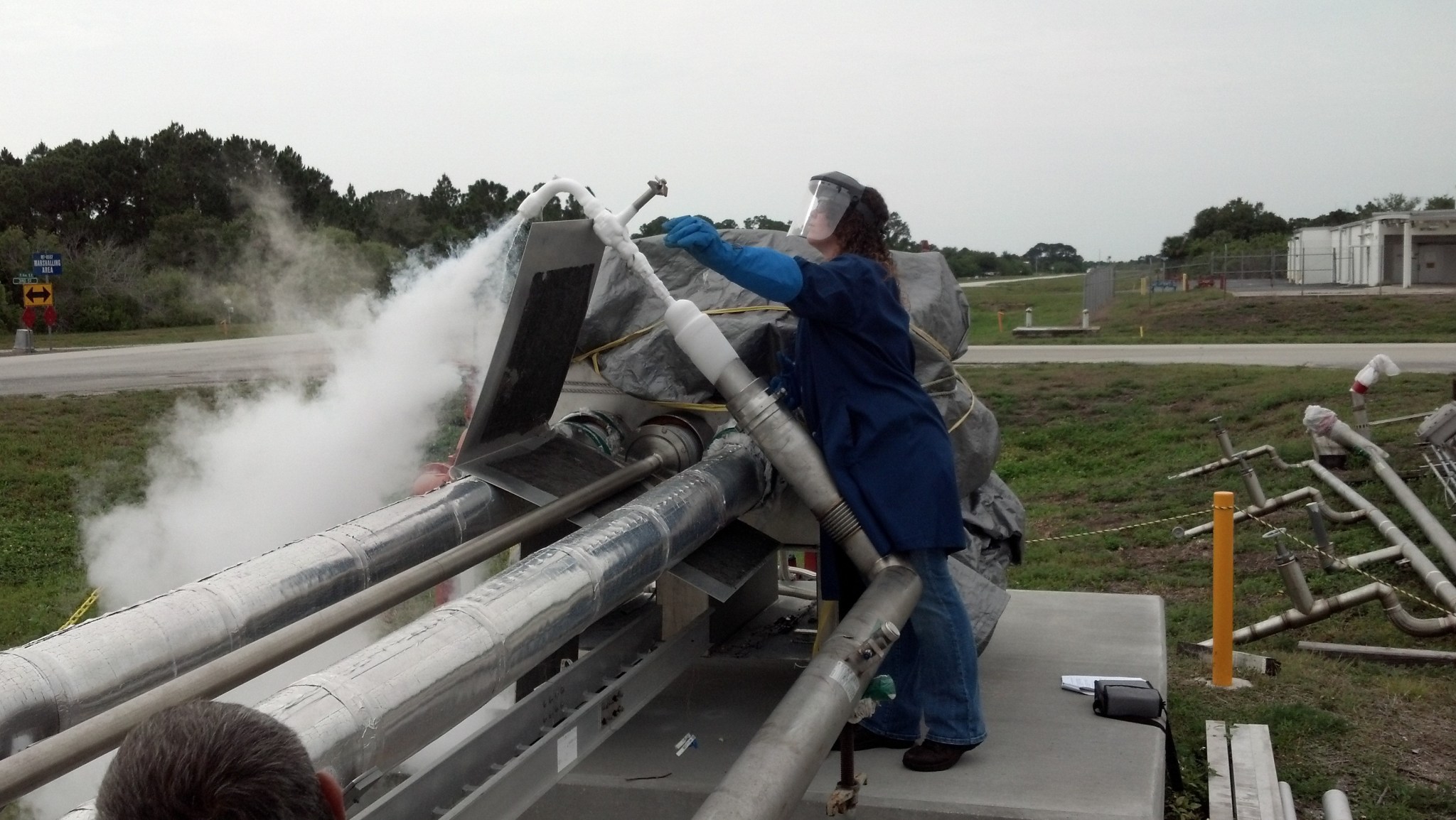By Danielle Sempsrott
NASA’s Kennedy Space Center
Since she began her cryogenics career 18 years ago at NASA’s Kennedy Space Center, Angela Krenn’s specialty has been using extreme cold to solve engineering challenges. Now, her career is heating up as principal technologist for thermal in the agency’s Space Technology Mission Directorate’s (STMD). NASA created the new position to pull multiple disciplines together as the application of thermal technologies becomes increasingly important to future space exploration.
When Krenn officially assumed her new role on Nov. 6, 2020, her responsibilities broadened beyond cryogenics to overseeing all thermal-related technology developments for the agency.
“I’m already noticing a lot more interplay with the warm side of thermal management issues,” she said. “I’ve been focused a lot on keeping things cold, and now I’ll have to also consider keeping things warm.”
Thermal technologies play an important part of getting objects into orbit. Extreme cooling greatly increases the amount of chemical energy that can fit into a rocket’s fuel tanks. Storage tanks can hold 848 times more super-cold liquid hydrogen than gaseous hydrogen at normal atmospheric temperature and pressure.
Similarly, thermal technologies are enabling for many of NASA’s missions. As the agency begins exploring the Moon with the Artemis program, instrumentation needs to be kept warm enough to function properly when exposed to extreme temperatures, such as regions of the lunar surface that remain permanently in shadow. NASA also needs to know how to remove waste heat from nuclear power sources. NASA uses nuclear power for many space exploration missions, including on the Perseverance rover, which is scheduled to land on Mars on Feb. 6, 2021.
Krenn said some of her new job’s most important aspects are identifying gaps in current thermal technologies and prioritizing different solutions to close those gaps.
“Dealing with the flow of energy plays into all of the different subsystems, and that involves a lot of stakeholders,” she said. “Different groups at NASA are working different pieces of the puzzle, so integrating across those groups to get the full picture to come together will probably be the biggest challenge.”
A Florida native, Krenn grew up in Fernandina Beach on Amelia Island and remembers wanting to work for NASA ever since coming to the Space Coast with friends and family to watch shuttle launches.
“I was always very taken with it,” she recalled. “I always knew I wanted to play a part in that. I don’t remember ever wanting to do anything else.”
Krenn began her Kennedy career working for United Space Alliance supporting the space shuttle. She described her earliest job working with liquid hydrogen as “better than words can describe.”
“It was like realizing your dream immediately out of college – the first job you get, and it’s more amazing than you had even hoped,” she said.
Krenn credits her parents with playing a large role in getting her where she is today, and they continue to be a big inspiration to her.
“They always encouraged me when I was growing up that I could do anything if I worked hard and put my mind to it,” she said. “That went a long way toward helping me realize my goals as a kid and, even today, they still constantly encourage me.”
Krenn received a master’s degree in physics from the University of Central Florida (UCF) in Orlando through the Kennedy Graduate Fellowship Program, and she believes her educational background in physics will help when she encounters those warm-temperature scenarios. She also received an MBA from UCF, and she has a bachelor’s degree in aerospace engineering from Embry Riddle Aeronautical University in Daytona Beach, Florida.
Krenn lives in Merritt Island, Florida, with her husband, Mike, their son, Alex, and daughter, Amelia (named after the area where Krenn grew up). She also has a miniature Aussie doodle, Nova, and a cat, Bandit, whom she likes to call “Mr. Meowgi” in reference to “The Karate Kid.”
“That didn’t get the family’s approval, so his name is Bandit. But that’s OK, it doesn’t stop me,” she joked.
In her spare time, Krenn likes to play golf and recently started bike riding to get outdoors and enjoy the fresh air.




























